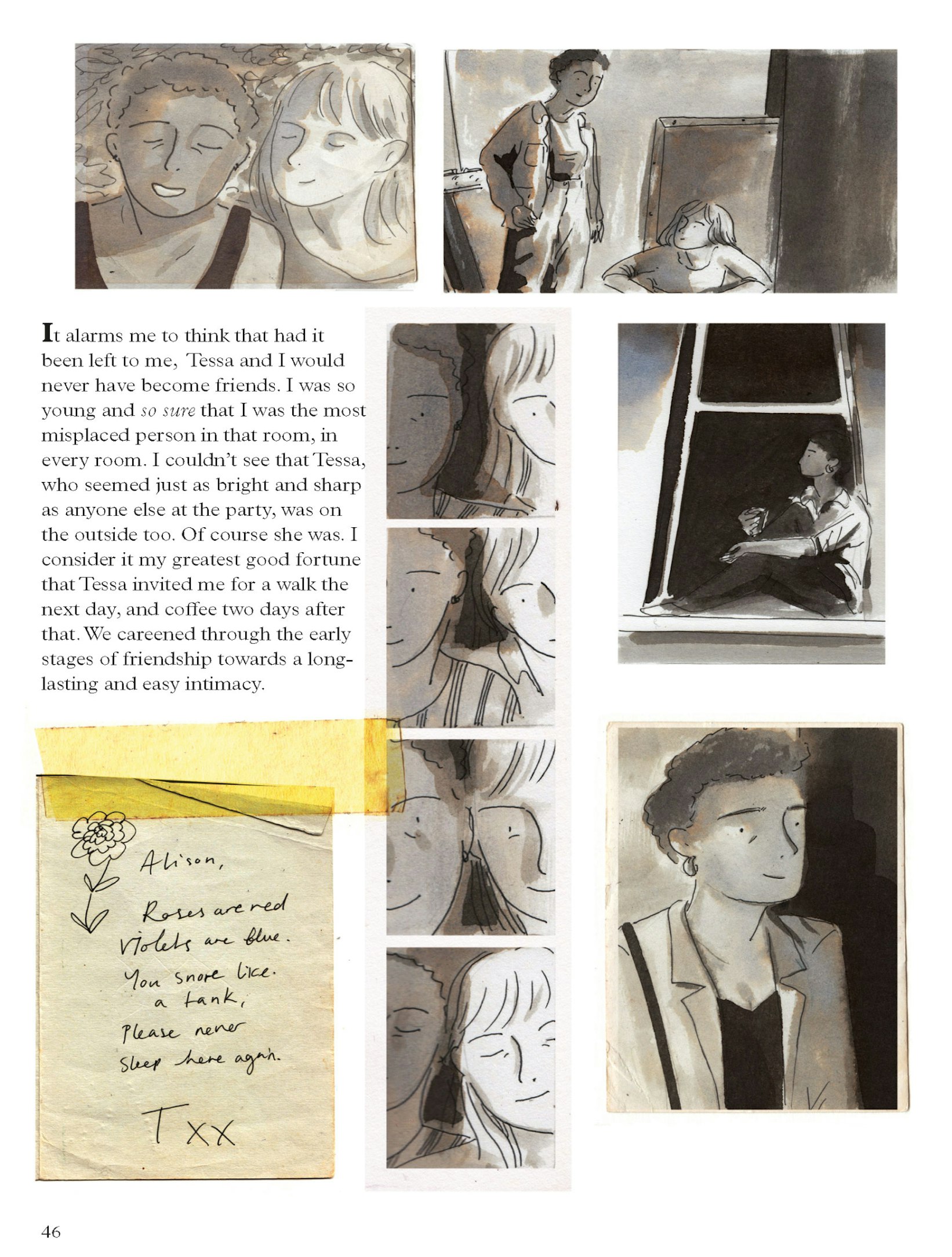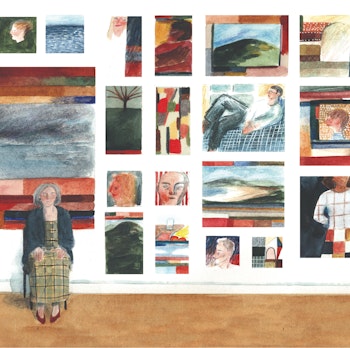Londoner Lizzy Stewart is a talented storyteller, combining her beautiful artwork with wonderful words to create books loved by children and adults alike. Her first graphic novel, Alison, follows a 20-year-old as she navigates friendship and love in London’s art scene in the 70s.
We recently caught up with Lizzy to chat about her process – the way her illustrations and words work together to create a vivid world and compelling narrative.

What was the genesis of the idea for the book?
The tipping point came when my mum loaned me a folder of papers that belonged to my grandma. It was mostly poetry, some prose and essays that she’d written in her early twenties. She wrote about wanting to be a writer but, newly married and with a small child, she didn’t know how she’d manage it. It was so familiar – a young woman struggling with who the world wants her to be.
I’d also recently read Nell Dunn’s Talking to Women, which collates a set of conversations Dunn had with women in the sixties about art and work and sex and families. Those two things really jolted me into writing this story, which is about a woman trying to move through the world as best she can.
How much of you is in the character of Alison?
I think the author (or illustrator) is always slightly present in their characters. I think I’m probably in Alison, Tessa and Patrick, to some extent. Alison isn’t me though. Her story is not mine.
I find the fact that people want to know if she’s me, or if she’s a real person, really interesting. I love fiction, I’m usually more delighted to know that something is made up than to discover that it’s based on real things. I really like the play involved in inventing people and events, it goes back to the worlds we made up as children. I almost never want to know whether something is real or not, which, I think, puts me in the minority!
With a graphic novel like this, you're writing and illustrating. What comes first in your process – the words or the pictures?
I wrote everything first. Whilst I was writing I would do sketches of the characters to try and get them clear in my head, but I felt I had to write the story before any serious drawing happened. The images come to mind whilst I write and I just have to hope that they stick in my head long enough that I remember them when I come back to drawing. A high risk strategy!

“It’s important to feel out the process, explore what works for you and, crucially, what you have patience for.”
A large part of the story is about Alison finding her own style and having confidence in it. You too have a distinct style of illustration and teach illustration yourself, what do you tell your students about discovering a personal style of illustration?
I hate the word ‘style’. I hate it. It’s something we shackle ourselves to as artists and more often than not it ends up limiting the scope of what we can make, especially as students. We should feel free to experiment and explore, not worry about whether a drawing fits with a coherent body of commercial work. I have many different ways of approaching my work, things don’t necessarily look the same year on year. I like to keep moving. What unites the things I make might not be the look of things but the viewpoint, the stories I choose to tell and the way I see the world.
We of course love all the letters and notes written between characters that you've illustrated and featured in the book. Is letter writing something close to your heart? Or was it more a case of an interesting visual technique?
It definitely used to be. Everyone loves getting post, right? But, like everyone else, I tend to email and text almost exclusively these days. The letter writing was a nice visual device but also comes from the fact that most of the book takes place in the eighties when notes and letters were the only way to leave people messages. Leaving a note on the kitchen side when you went out, writing thank you letters, sending life updates to your parents via post. Definitely an unconscious driving factor for setting the book pre-millennium was not having to deal with any digital culture at all!
What would be your advice to anyone wanting to create a graphic novel but unsure where to start?
Start small. Set yourself the task of drawing a very simple story across a few pages. Then try a ten-page story and then maybe a thirty-page story. Perhaps they could all be thematically linked (in which case when you put it all together, you’re a quarter of the way). Telling a story with pictures is very different from writing one. It’s important to feel out the process, explore what works for you and, crucially, what you have patience for. It’s a lot of drawing, you might find out that the scene you set in a supermarket (all those items on shelves) should be relocated somewhere more minimal!

Lizzy’s favourite graphic novels and inspiring reads:
Super Mutant Magic Academy by Jillian Tamaki
A funny, strange and moving account of growing up told through the medium of comic strips about mutant teenagers.
Important Artifacts and Personal Property from the Collection of Lenore Doolan and Harold Morris, Including Books, Street Fashion, and Jewelry by Leanne Shapton
Not a traditional graphic novel, but the story of a relationship told through the auction catalogue of their belongings post-break-up. This one really opened my eyes to what a book with pictures could be!
Ethel and Ernest by Raymond Briggs
A classic. A deeply personal story that doubles as a history of twentieth-century Britain.
The Photographer by Didier Lefèvre, Emmanuel Guibert, and Frédéric Lemercier
In case fiction isn’t your thing!











